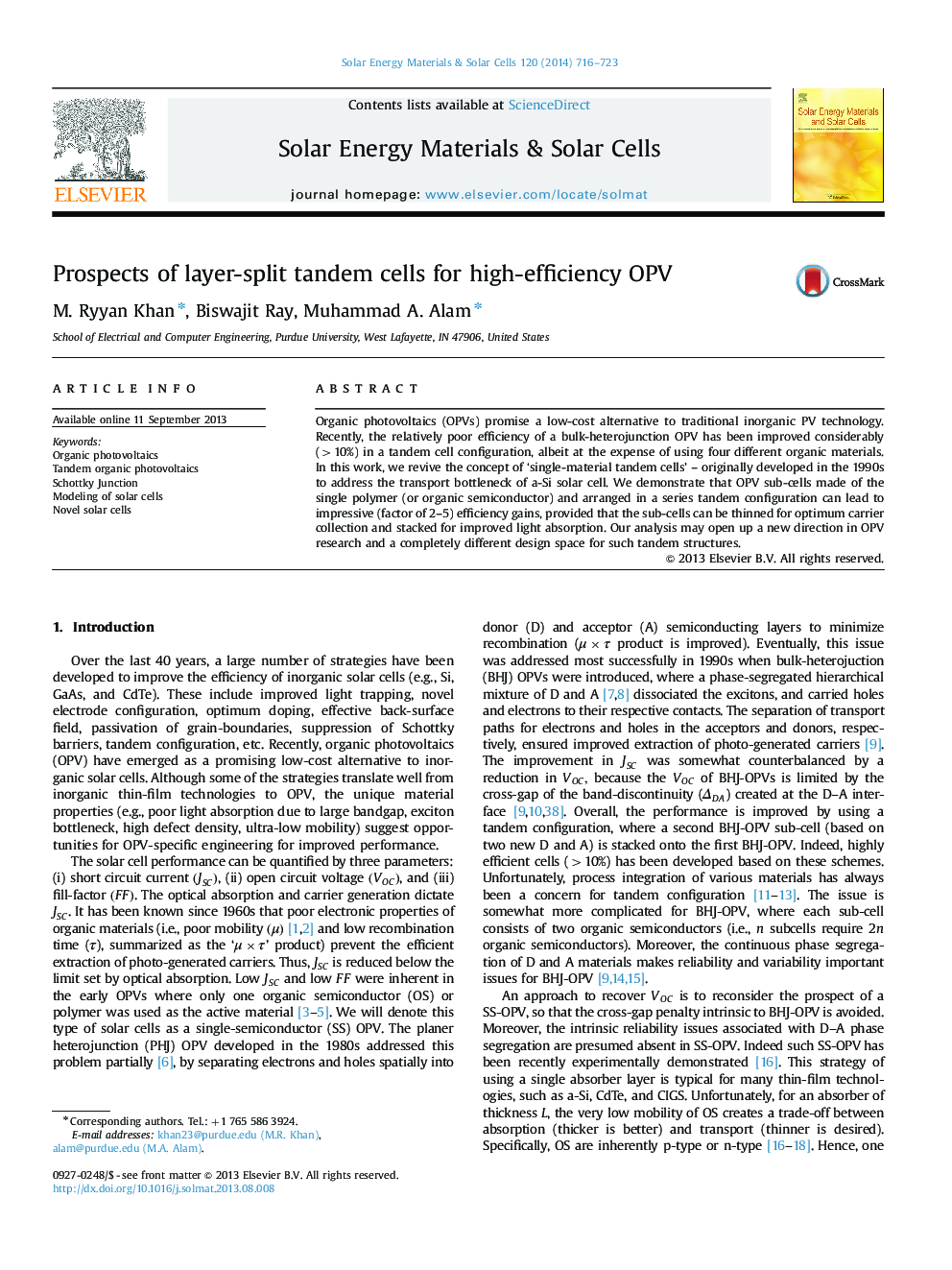| Article ID | Journal | Published Year | Pages | File Type |
|---|---|---|---|---|
| 78189 | Solar Energy Materials and Solar Cells | 2014 | 8 Pages |
•We propose a tandem structure for single polymer based material OPV which will have improved Voc, efficiency, and reliability compared to bulk-heterojunction OPV.•We present the design rules and performance of tandem OPV based on a range of material properties typical for polymers.•A 2-layer tandem can show efficiency enhancement by factor of ~1.5–2. The N-layer tandem can show efficiency boost up to factor of ~2–5.
Organic photovoltaics (OPVs) promise a low-cost alternative to traditional inorganic PV technology. Recently, the relatively poor efficiency of a bulk-heterojunction OPV has been improved considerably (>10%) in a tandem cell configuration, albeit at the expense of using four different organic materials. In this work, we revive the concept of ‘single-material tandem cells’ – originally developed in the 1990s to address the transport bottleneck of a-Si solar cell. We demonstrate that OPV sub-cells made of the single polymer (or organic semiconductor) and arranged in a series tandem configuration can lead to impressive (factor of 2–5) efficiency gains, provided that the sub-cells can be thinned for optimum carrier collection and stacked for improved light absorption. Our analysis may open up a new direction in OPV research and a completely different design space for such tandem structures.
